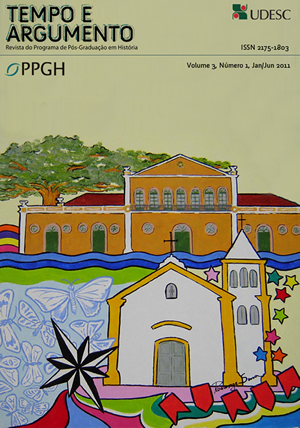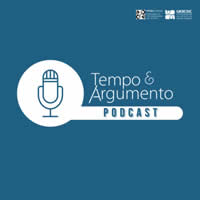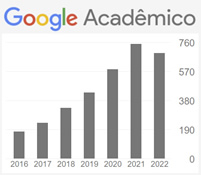Lima, uma cidade entre a aristocracia e a plebe (1950-1980)
DOI:
https://doi.org/10.5965/2175180303012011051Palabras clave:
Lima, migração, Ciências SociaisResumen
A cidade de Lima passou por sérias transformações ao longo dos últimos sessenta anos. Até meados do século passado, Lima guardava uma estrutura urbanística semelhante a aquela construída ainda no final do século XVIII já nas últimas décadas de seu período colonial. Tal realidade começou a se transformar com o início abrupto dos fluxos migratórios serra-costa em 1946. No entanto, mais do que alterações em seu plano urbanístico, Lima passou por uma reconfiguração étnica e social que dariam novas cores e novos padrões comportamentais e culturais à capital peruana. A chegada do migrante à cidade provocou a reação conservadora da elite local, mas também despertou na intelectualidade a necessidade de se elaborar novas formas de se pensar o lugar do migrante no espaço citadino e, de outra forma, criar novas representações sobre a própria cidade. De uma cidade isolada do restante de seu território nacional, Lima passou a conviver com uma gama de referenciais culturais e étnicos, no entanto, sem ceder maiores espaços para a integração de suas massas à sua lógica urbana e social, deixando claro a separação existente entre sua aristocracia e sua plebe.
Descargas
Citas
ADRIANZÉN, Alberto (Ed.). Pensamiento político peruano:1930 – 1968. Lima: Desco – Centro de Estudios y Promoción del Desarrollo, 1990.
AGUIRRE, Carlos. Aristocracia y Plebe. In: LÓPEZ JIMÉNEZ, Sinesio (dir). Homenaje a Alberto Flores Galindo: otro mundo es posible.Libros & Artes. Lima: Biblioteca Nacional del Perú, 2005.
ALTAMIRANO, Teófilo. Estructuras Regionales, migración y formación de Asociaciones Regionales en Lima Metropolitana.Lima: PUCP, 1977.
ALVOJIN, Cristóbal; HERNANDEZ, Max; SAGASTI, Francisco. Los 50 Libros que Todo Peruano Culto Debe Leer. Lima: Caretas/PUCP, 2000.
COLLIER, David. “Los Pueblos Jóvenes y la Adaptación de los migrantes al ambiente urbano limeño”. In: Estudios Andinos, ano 3, vol III, n. 3, Centro de Estudios Latinoamericanos, Universidad de Pitsburg, 1973.
_______. Barriadas y Elites. De Odría a Velasco.Lima: IEP, 1978.
CONTRERAS, Carlos; CUETO, Marcos. Historia del Perú contemporáneo. 4. ed. Lima: IEP, 2007.
DE SOTO, Hernando. El otro Sendero. Lima: Instituto Libertad y Democracia, 1986.
DEGREGORI, Carlos Iván; BLONDET, Cecilia; LYNCH, Nicolás. Conquistadores de un nuevo mundo. De invasores a ciudadanos en San Martin de Porras. Lima: IEP, 1986.
FLORES GALINDO, Alberto. Aristocracia y Plebe. Lima, 1760 – 1830. Lima: Mosca Azul Editores, 1984.
_______. Lima: crónica de un deterioro. In: ________. Obras Completas. Tomo VI. Lima: SUR, 2007.
_______. Los caballos de los conquistadores, otra vez. In: _________. Tiempos de Plagas.Lima: Caballo Rojo,1988.
FRANCO, Carlos. Exploraciones en “otra modernidad”: de la migración a la plebe urbana. In: URBANO, Henrique (comp). Modernidad en los Andes.Lima: Centro Bartolomé de las Casas, 1991, p. 193-194.
JONGKIND, F. “La supuesta funcionalidad de los clubes regionales en Lima, Perú”. In:Boletín de Estudios Latinoamericanos, n. 11, University of Amsterdam, Holanda, 1971.
LLORÉNS, José Antonio. “Voces provincianas en Lima: migrantes andinos y comunicación radial”. In: Revista Peruana de Ciencias Sociales. Vol 2, n. 1, Lima, 1990.
MANGIN, Willian. “Clube de provincianos en Lima”. In: Estudios sobre la Cultura del Perú. Lima: UNMSM, 1964.
MATOS MAR, José. Desborde Popular y Crisis del Estado: el nuevo rostro del Perú en La década de 1980. Lima: Concytec, 1988.
_______. “Migración y urbanización. Las barriadas limeñas: un caso de integración a la vida urbana. In: HAUSER, Philip M. La Urbanización en América Latina. Buenos Aires: Solar/Hachette, 1959.
PINHEIRO, Marcos Sorrilha. A Historiografia Revolucionária: Alberto Flores Galindo e a nueva historia Peruana (1970-1980). Revista Eletrônica da ANPHLAC, v. 9, p. 10, 2010.
SANDOVAL, Pablo. Lo rostros cambiantes de la ciudad: cultura urbana y antropología en el Peru. In: DEGREGORI, Carlos Iván (ed.). No Hay País Más Diverso:compendio de antropología peruana. Lima: Red para el Desarrollo de las Ciencias Sociales en el Perú, 2000, p. 279.
SOARES, Gabriela Pellegrino. Projetos Políticos de Modernização e Reforma no Peru:1950-1975. São Paulo: Annablume/FAPESP, 2000. Recebido em: 28/02/2011 Aprovado em: 01/04/2011.
QUIJANO, Anibal. El “movimiento indígena” y las cuestiones pendientes en América Latina.Disponível em: <http://www.democraciasur.com/regional/QuijanoMovIndigenaAL.htm>. Acesso em: 27 jun. 2008.
Descargas
Publicado
Cómo citar
Número
Sección
Licencia
Derechos de autor 2011 Tempo e Argumento

Esta obra está bajo una licencia internacional Creative Commons Atribución-NoComercial 4.0.
Os artigos cujos autores são identificados representam a expressão do ponto de vista de seus autores e não a posição oficial da Tempo e Argumento.





